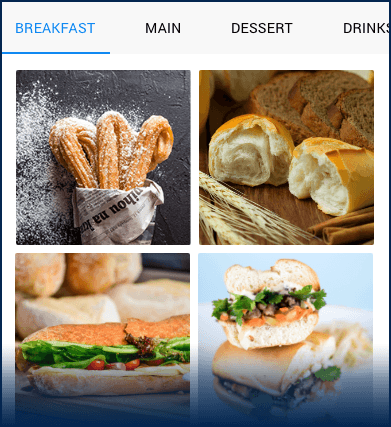

The items may be flicked to move them along the path.įor example, if there is a simple list model defined in a file ContactModel.qml like this: The delegate is instantiated for each item on the path. The view has a model, which defines the data to be displayed, and a delegate, which defines how the data should be displayed. positionViewAtIndex(int index, PositionMode mode)Ī PathView displays data from models created from built-in QML types like ListModel and XmlListModel, or custom model classes defined in C++ that inherit from QAbstractListModel.List of all members, including inherited members.The width of each tab can be set separately: webix. More details are given in the dedicated documentation article. are available through the tabbar configuration: view : "tabview" , If the tabs are wider than the available space, some of them are pushed to a popup list and can be reached through the related menu.Įverything is done fully automatically, though customization options for tab and popup width, icons, etc. Related sample: Tabview: Close Tab Button Responsive tabbar To make a separate tab closable, use the close property in its configuration: view : "tabview" , To make all tabs closable, the close property should be set to true in the tabbar configuration: view : "tabview" , Defining tabs that can be closedĬlosing functionality is a tabbar feature. You can learn more about different types of defining icons in Webix in the Icons with UI Widgets article. Related sample: Multiview Tabbar with Icons Icons for the tabbar tabs are set via additional HTML in the tab header: view : "tabview" , The animate property may take an object with advanced animation settings. Since animation is a multiview feature, it can be enabled within the multiview configuration. Enabling animationīy default switching of TabView tabs is not animated. getMultiview ( ) Īll the API methods, events and properties of ui.tabbar and ui.multiview respectively are applicable to these objects. getTabbar ( ) var multiviewObj = $$ ( "my_tabview" ). by accessing multiview and tabbar objects to work with them dynamically:.If the configurations are omitted, default values will be used. These configuration objects may contain native properties of multiview and tabbar through the same-name object properties in the initial configuration:.The hybrid nature of a TabView allows configuring each of its parts separately: Note that switching between views is enabled automatically via the Tabbar control.įor more customization, use the Multiview widget and choose the needed switching method. body - a configuration object for the widget that is placed in this cell.header - a string with a heading for the cell, displayed as a tab title.View : "form", // form config } } ] } ) There's no need to create a MultiView and add switching buttons for it.Įverything lies within one and the same TabView widget with the cells property that contains collections of views.


It also features dedicated methods to add and remove views together with the corresponding tabs. TabView allows quickly initializing a MultiView with a built-in ability to switch between the views. TabView is a hybrid component that is made of a multiview and a tabbar.


 0 kommentar(er)
0 kommentar(er)
